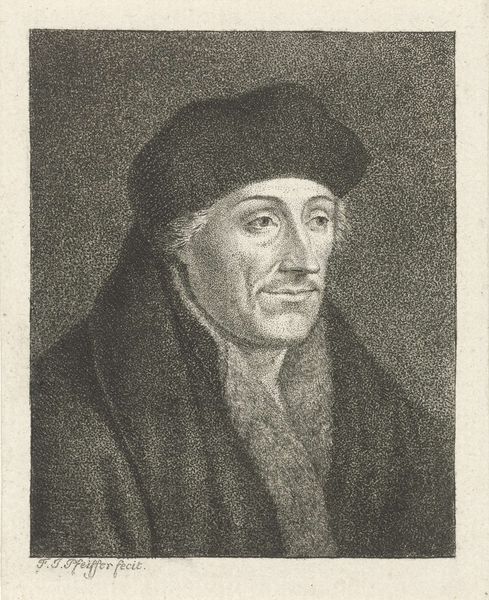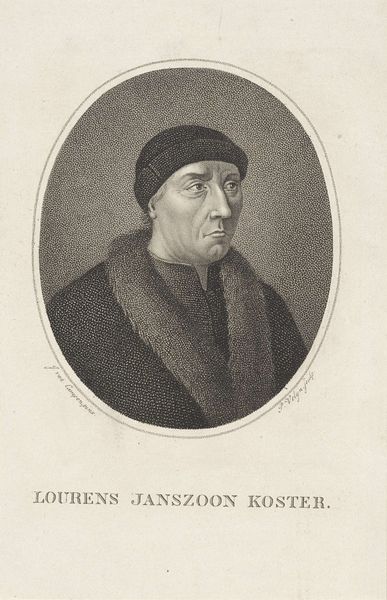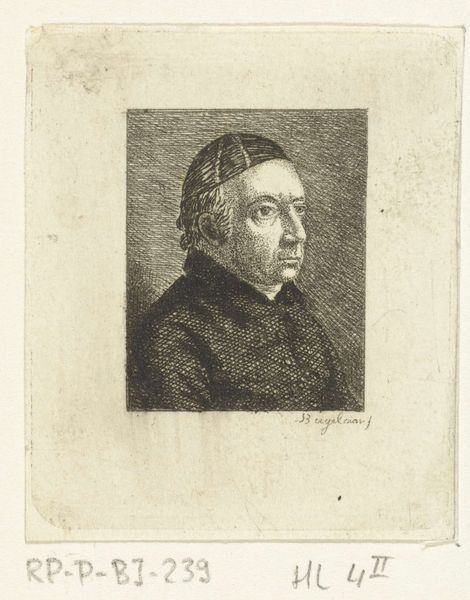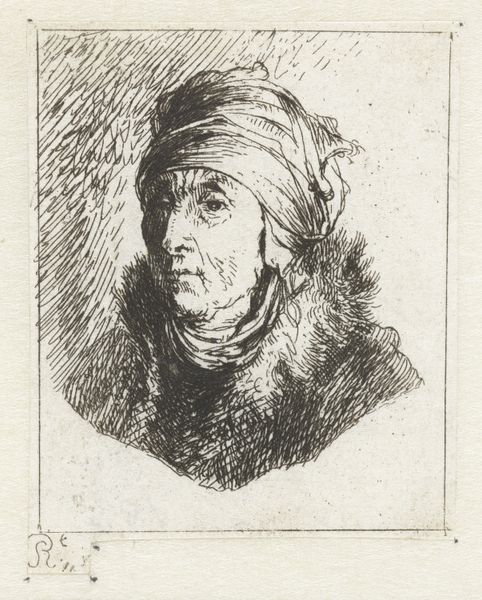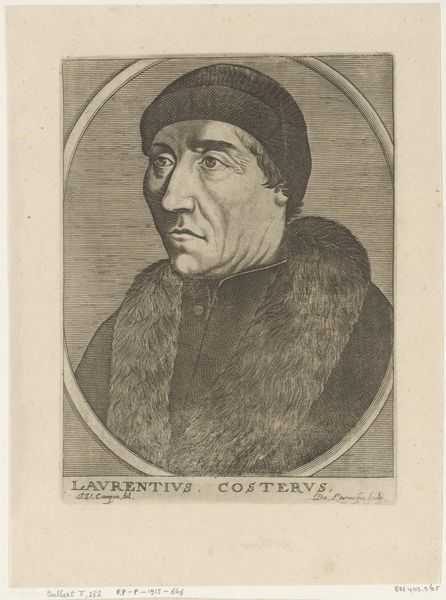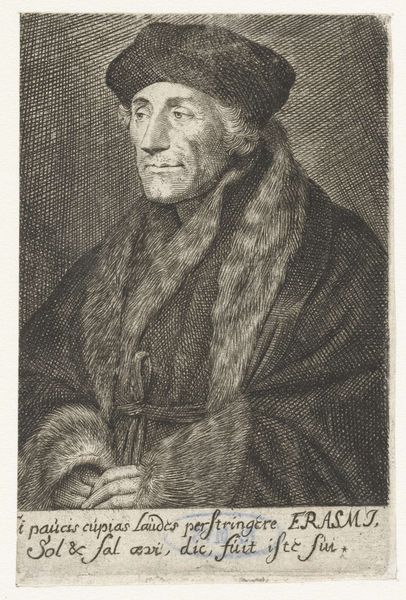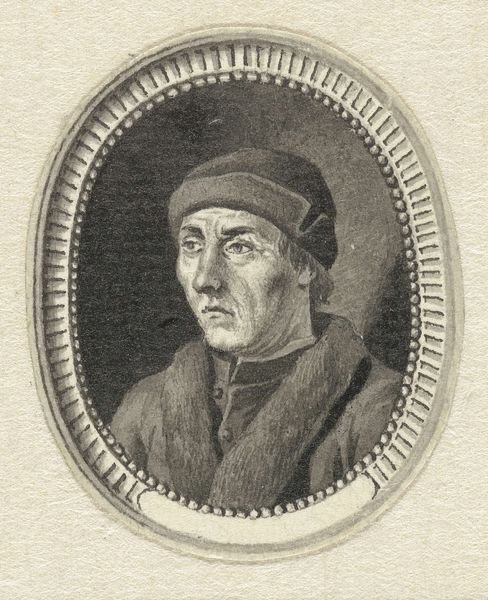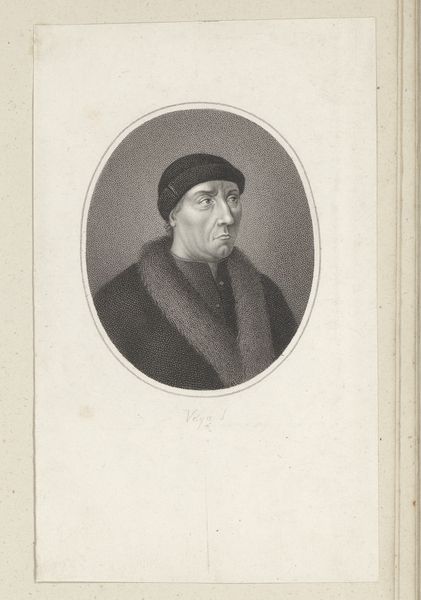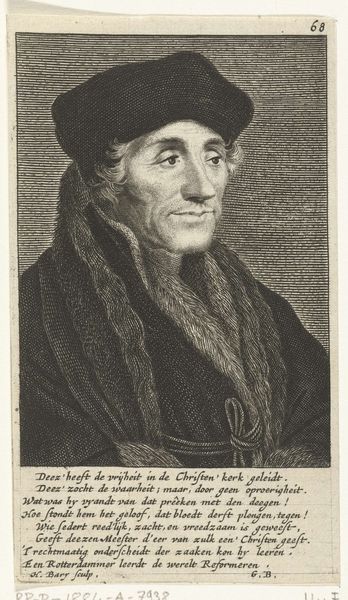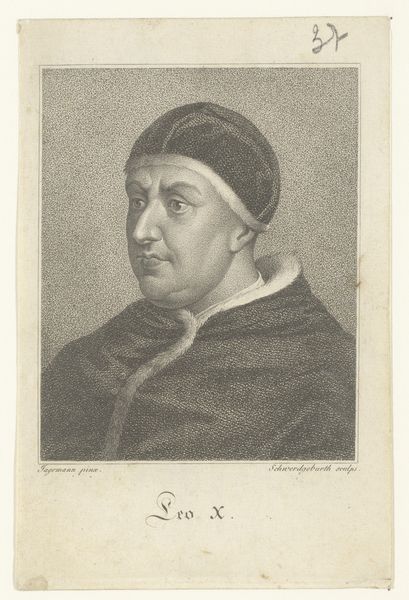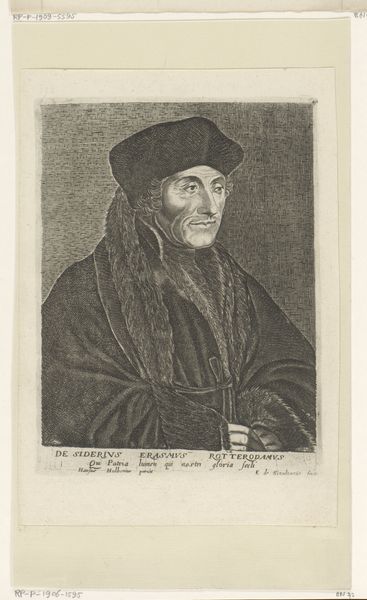
print, graphite, engraving
#
portrait
# print
#
caricature
#
pencil drawing
#
graphite
#
portrait drawing
#
history-painting
#
engraving
Dimensions: height 91 mm, width 71 mm
Copyright: Rijks Museum: Open Domain
Editor: Here we have a portrait, created in 1856 by Joseph Hartogensis, of Laurens Jansz. Coster. It’s a print, quite small, but striking. I am interested in what this engraving says about Dutch identity and the politics of image-making in the 19th century. How should we understand this piece? Curator: That’s a very astute starting point. Consider the cult of personality being built here. Laurens Jansz. Coster was being promoted as the Dutch inventor of printing. So this portrait isn't just an image; it’s a political statement, contributing to the construction of national pride and cultural identity. Editor: So the choice to depict Coster in this specific way was deliberate? Curator: Absolutely. Think about the context. The 19th century was a period of intense nationalism. Nations were looking to solidify their identities and mythologize their histories. Promoting Coster served that purpose, creating a founding father of sorts. How might the choice of a print medium amplify this political dimension? Editor: Well, prints are easily reproducible, so the image of Coster could circulate widely and reinforce that national narrative. It’s like propaganda, in a way. Curator: Precisely! And consider who *isn't* being centered in this narrative. Think about Gutenberg, for instance, and the complexities of the history of printing. This portrait serves a specific political agenda rooted in Dutch cultural nationalism. Editor: That’s fascinating! I had considered the nationalistic aspect, but I didn't think about it being a deliberate push against other claims of invention. I’ll definitely look at the print’s place in the cultural narrative of the time. Thanks! Curator: My pleasure!
Comments
No comments
Be the first to comment and join the conversation on the ultimate creative platform.
